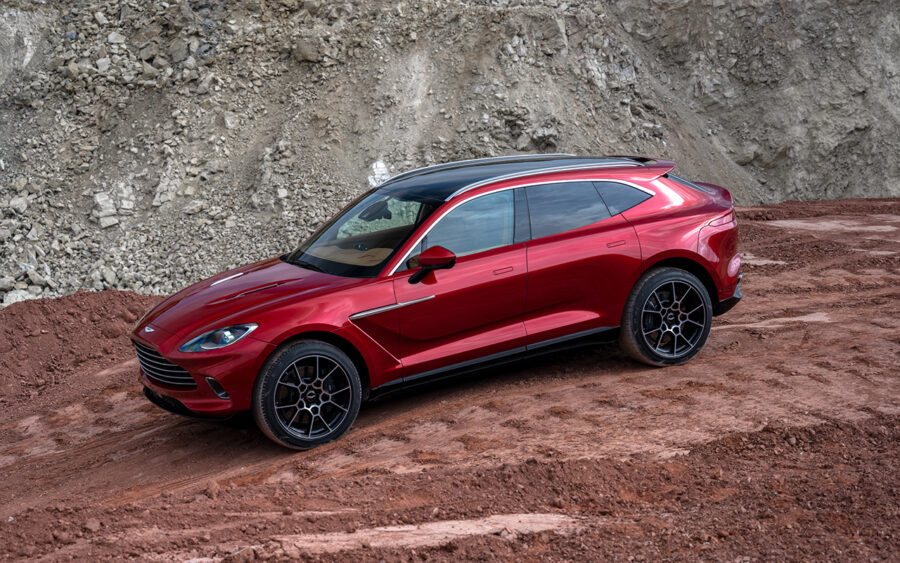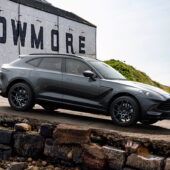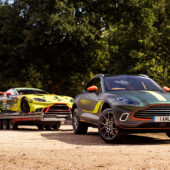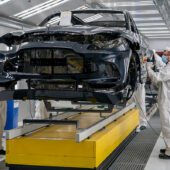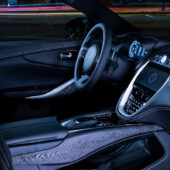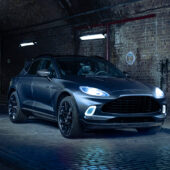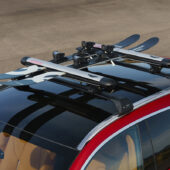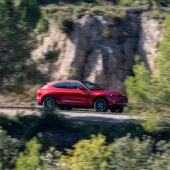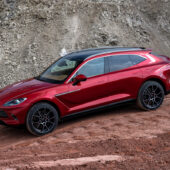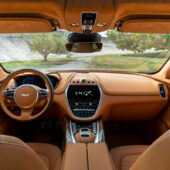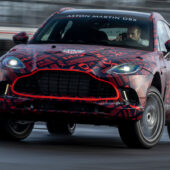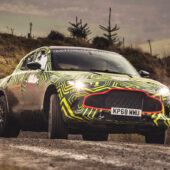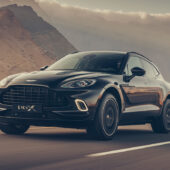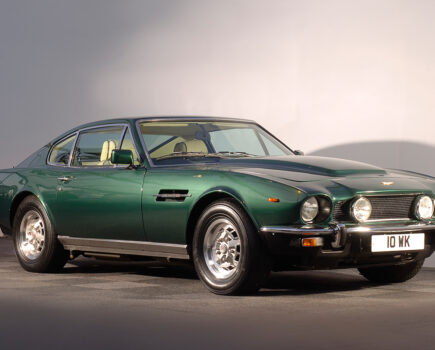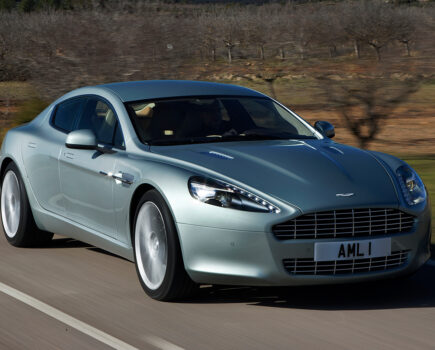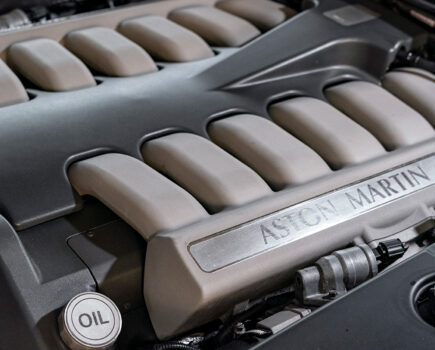New factory, new segment, new crises: Aston’s first SUV takes the firm into new territory, having set the record for the most powerful petrol SUV on sale
Words: Jon Burgess
Aston Martin was certainly gauging input for how far it could move past GT cars when it unveiled the DBX concept in 2015; while its new incumbent CEO, Dr Andy Palmer, was expected to stretch the boundaries, the three-door sport utility vehicle / crossover still surprised aficionados. Aston’s focused sports car range – the V8 and V12 Vantage – was coming towards the end of its life, but had a carved out a respectable niche; with the DBX, battery power was also mooted.
The DBX arrived in a tsunami of announcements – the Lagonda Taraf, limited run DB10, V12 Vantage GT3 and Vulcan had all made themselves known in recent months. Aston’s cars, while squeezing the most from the Vertical Horizontal (VH) platform, One-77-based Vulcan aside, were getting faster and more exclusive.
Strictly speaking, the Aston Martin DBX wasn’t the brand’s first SUV: at the 2009 Geneva Salon, alongside the Lagonda Taraf concept, a bluff, square booted Lagonda Concept luxury utility vehicle (LUV) took the stand. Designed by a team run by design director, Marek Reichman, the V12-powered Concept LUV recalled the LG6 V12 and Lagonda 3-Litre in the rear, was based on a Mercedes GL, foreshadowing the increasing stakes the German maker would take in Aston Martin in 2013 and 2020. The engine, for the time being, remained Aston’s 5.9-litre V12.
Using a near moribund property to stretch the boundaries of the marque wasn’t a bad move – but for the moment, battery power wouldn’t be moving the production car; Aston instead decided to use the limited-edition RapidE of 2018 as a test bed in which to gather data for future electric vehicles.
Aston badly needed a rival in the lucrative sport utility segment – it trailed behind Bentley, Lamborghini, Maserati and Porsche – and a petrol powered, five-door DBX was the answer. In 2016, it signed off on a former RAF base in Wales – St Athan – as a production facility in which to build the new car. Gaydon had no more room and Newport Pagnell Works was engaged in building Continuation vehicles.
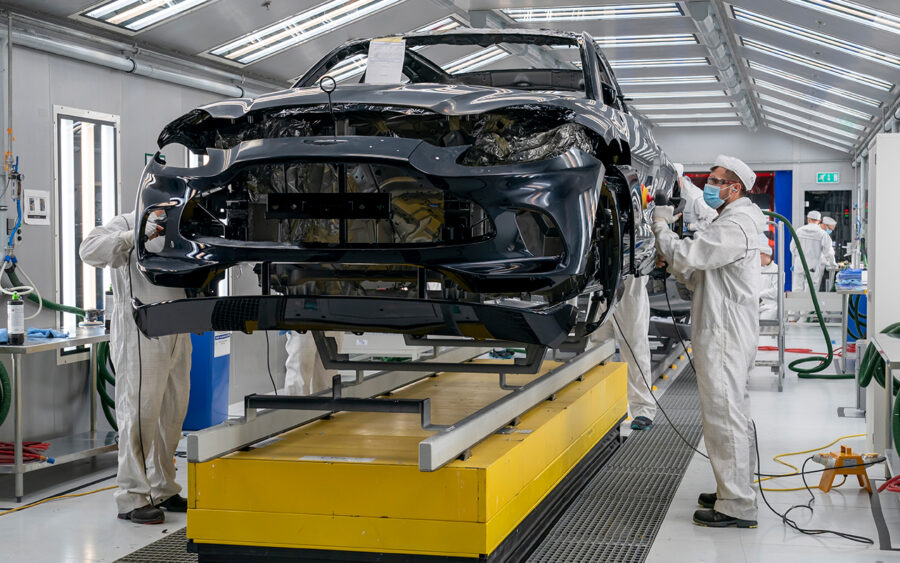
Aston Martin’s facility at St Athan, Wales
Using an erstwhile RAF facility was fitting; in 1947, shortly after he acquired Aston Martin and Lagonda, David Brown had the latter marque build its new cars at Hanworth Park in what is now West London, formerly known as RAF Feltham. The so-called Feltham era had begun, even if the majority of Aston Martin assembly took place in West Yorkshire between satellites of the David Brown Tractor Group in Huddersfield and Farsley.
St Athan opened in 2019 – but production of the Aston Martin DBX was delayed owing to the coronavirus pandemic. Delays and cash shortages since the firm’s floating on the stock market barely a year earlier meant that the DBX had to perform out of the gate; it was to carry Aston Martin and increase its projected unit sales by as much as two-thirds, more even than the ambitious-at-the-time expectations heaped upon the DB7.
Production DBXs followed DB11 and Vantage (2018) practice – extruded aluminium pressings with Mercedes-AMG running gear, as per the two firms’ collaboration agreement. The DBX’s platform, was bespoke, however, with a four-wheel drive system via a nine-speed gearbox with paddles, powered by a 4.0-litre, 542bhp twin-turbo V8 known within Mercedes as the M177. Rear-driven on tarmac, power could be sent to the front and centre diffs if slip was detected. Having a platform all to itself also meant that the Aston Martin DBX, while over the two-tonne mark, remained lighter on its feet than its car-derived competitors.
Although off-road ability was dialled in, Aston realised that much of the DBX’s appeal would come from its highway manners. Triple chamber, active anti-roll air suspension, with fast-acting Bilstein dampers, was honed by none other than Matt Becker, formerly of Lotus.
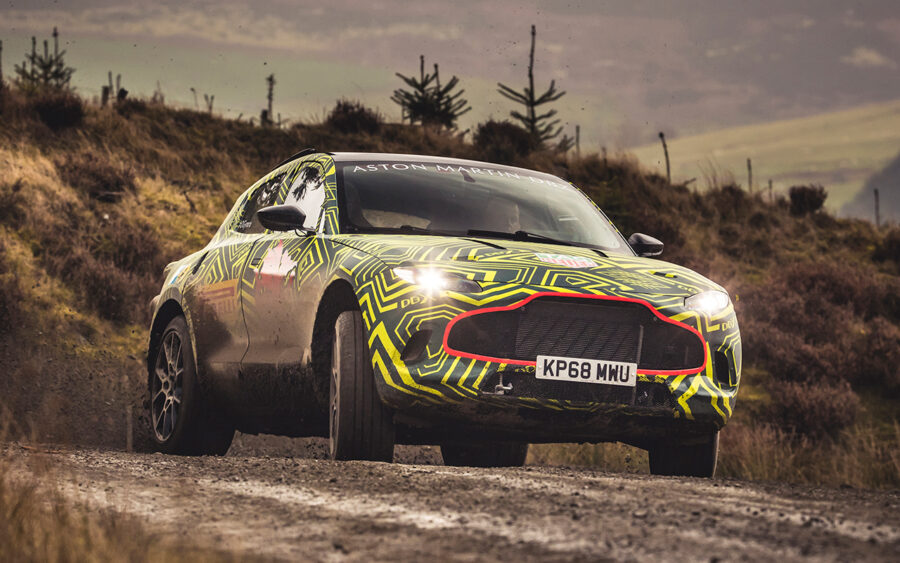
Aston Martin DBX prototype testing off-road
Buyers of the first 500 Aston Martin DBXs received what became known as the ‘1913 package’; special badges, a plaque and a build book signed by Andy Palmer and Marek Reichman to commemorate Aston’s then 106-year history.
The following year saw a special engine fitted to the DBX for China alone: a blown 3.0-litre Mercedes-Benz AMG straight-six offered better fuel economy and smaller car tax payments as a result. Formula One came calling, too – the DBX joined the Safety Car fleet, further elevating its profile.
2022 marked another milestone in the DBX’s history: the then-new 707 became the fastest and most powerful luxury SUV on the market. Its name came from its power output; boasting 165bhp more than the standard DBX, which continued on in production, 0-60 was quoted at 3.3 seconds aided by the addition of launch control within the nine-speed gearbox; a reworked, larger nose, with 30 per cent more cooling capacity faster spooling, more powerful ball-bearing twin turbos and a new exhaust system lifted the power of the M177 up to where records were broken.
Much had to be done to the bodywork to keep the DBX 707 check: that wider nose fed auxiliary radiators, and blisters in the bodywork ducted air the engine and gearbox, with new front and rear splitters to provide negative lift. Wheel sizes went up, too from the standard car’s 20-inch items to a 22-inch replacement set; a 23-inch option was also available. Boot space, a key feature of saloon Lagondas and faster touring Astons like the DB6, remained unchanged from the standard car’s, at 638 litres.
With its point proven – and Aston having gathered date and feedback from the likes of the RapidE and Lagonda Vision battery powered prototypes; it’s fair to say that the DBX may get electrified after all. Having helped swerve another crisis, future customers could drive in the same silence enjoyed by critics having to eat their words as to Aston’s viability.
Aston Martin DBX timeline
2015
Three door electric DBX concept car shown at the 2015 Geneva Salon
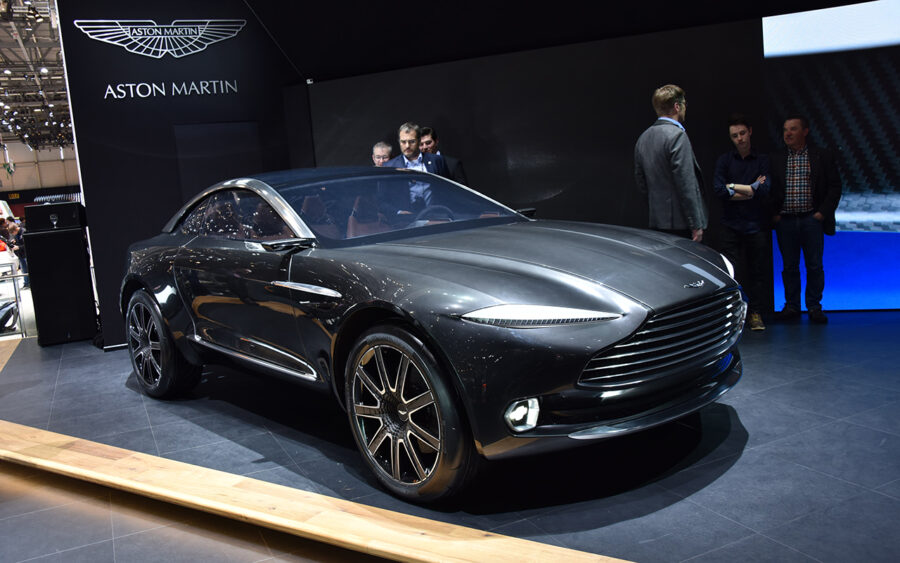
2016
Aston Martin selects St Athan, in Wales, a former RAF base and repair site, as the location in which to build the DBX, now a five-door petrol SUV.
2018
Aston Martin is floated on the stock exchange for the first time; speculators say reception to the DBX is crucial to the firm’s survival.
2019–2020
St Athan begins DBX pre-production and launches the car during the second quarter of 2020, straight into the COVID-19 pandemic.
2021
A lower emission, more frugal six-pot turbo DBX is launched for the Chinese market.
Formula One adds the DBX as one of its safety cars.

2022
Higher performance DBX 707 launched; a faster, more aerodynamic variant with a 165bhp boost in horsepower to become one of the most powerful SUVs on sale.

